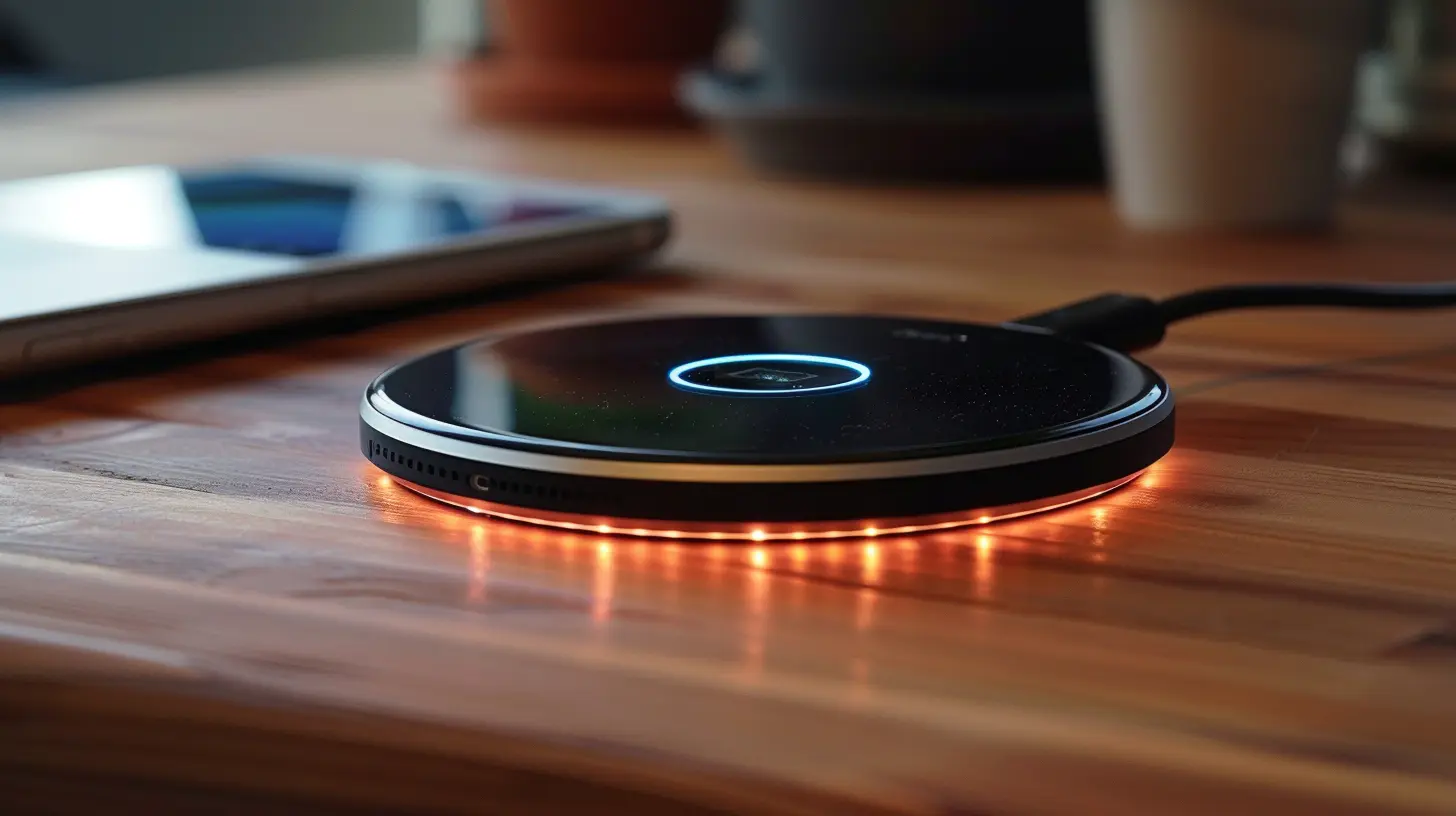The Evolution of Wireless Charging Standards
25 November 2025
Remember when charging your phone meant untangling a spaghetti mess of cables? Fast forward to today, and we have entered the magical realm of wireless charging. Just plop your device onto a charging pad, and voilà—no cords, no hassle.
But how did we get here? Wireless charging has gone through quite the transformation—from clunky inefficient tech to today’s sleek, seamless solutions. Let’s take a trip down memory lane and explore the fascinating evolution of wireless charging standards. 
The Humble Beginnings: Inductive Charging Makes Its Debut
Back in the early days, wireless charging felt more like a gimmick than a practical solution. The foundation of this technology is inductive charging, which uses electromagnetic fields to transfer energy between two coils—one in the charger and another in your device.The concept isn't new. In fact, Nikola Tesla experimented with wireless power transfer way back in the 1890s. But it wasn’t until much later that companies began implementing this idea in consumer electronics.
The first commercially available wireless charging solution came with the Palm Pre in 2009. Palm introduced the Touchstone charger, a small puck that allowed the phone to charge without plugging in. It was cool, but not exactly revolutionary. The device had to be precisely placed on the charger, making it more of a convenience gimmick than a game-changer. 
The Birth of Qi: Standardization Begins
As more companies toyed with the idea of wireless charging, the tech world realized one big problem—there was no universal standard. Enter the Wireless Power Consortium (WPC), which introduced the Qi (pronounced “chee”) standard in 2008.Qi wireless charging used inductive charging, but with improved efficiency. Soon, big players like Samsung, Nokia, and Google hopped on board, embedding Qi-compatible coils in their devices.
By 2012, Qi charging pads became more widespread. But early adopters quickly found an issue—devices still required precise positioning on the pad. Move your phone just a little to the left, and kaboom!—no charging. 
Magnetic Resonance: The Competing Standards War
While Qi was gaining traction, another wireless charging method was making waves: magnetic resonance charging (aka AirFuel Resonant, developed by the AirFuel Alliance). Unlike Qi, this technology allowed charging at greater distances and could power multiple devices simultaneously.The world of wireless charging briefly turned into a battlefield with two dominant standards:
- Qi (Inductive Charging) – Already gaining widespread adoption but required close contact with charging pads.
- AirFuel Resonant (Magnetic Resonance) – Allowed more freedom but was less widely supported.
This tech war meant manufacturers had to pick sides, leading to fragmentation. While AirFuel had promising features, Qi eventually won the popularity contest.
Why? Because Apple picked Qi. 
Apple Joins the Party: Wireless Charging Goes Mainstream
For years, Android manufacturers were dabbling in wireless charging, but it remained a niche feature. When Apple jumped on the Qi bandwagon with the iPhone 8 and iPhone X in 2017, everything changed. Suddenly, wireless charging was no longer a gimmick—it was the future.Apple’s adoption of Qi pushed the standard forward, forcing more manufacturers to include wireless charging in their flagship devices. Soon, Qi chargers were popping up everywhere, from coffee shops to car dashboards.
But, of course, Apple being Apple, they had to tweak things their way. Their version of Qi charging was slower than Android counterparts (only 7.5W instead of 10W+), but hey—they made it look cool.
MagSafe: Apple’s Spin on Wireless Charging
Then came MagSafe in 2020. Apple decided Qi wasn’t good enough, so they introduced their own version of wireless charging with magnets. MagSafe ensured proper alignment between the charger and the phone, improving efficiency while keeping Apple’s ecosystem tightly controlled.While MagSafe is technically still based on Qi, it has additional magnetic locking features. This allowed for faster charging speeds (up to 15W) and opened the door for magnetic accessories like wallets and stands.
Would other companies follow suit? Well, MagSafe-like solutions started appearing in the Android world soon after, proving Apple still knows how to shake things up.
The Future: Qi2, True Wireless, and Beyond
So, what’s next? Well, get ready for Qi2 (Qi version 2.0), which takes clear inspiration from Apple’s MagSafe. It promises:✅ Better alignment with magnets (goodbye, misaligned charging)
✅ More efficient charging (meaning faster speeds and less heat)
✅ Wider device compatibility
Beyond Qi2, true wireless charging—where your device charges while just being nearby a power source—is on the horizon. Companies like Xiaomi and Ossia are working on technology that would allow devices to charge from meters away, no pad required.
Imagine walking into a room and your phone just starts charging—no cables, no pads, no nonsense. That’s the dream!
Challenges and Limitations of Wireless Charging
Of course, wireless charging isn’t perfect. There are still some pesky issues that need ironing out:🟡 Slower Speeds – Even with advancements, wired charging is still faster. (USB-C chargers can hit 100W+, while wireless chargers max out at 50W if you’re lucky.)
🟡 Energy Efficiency – Wireless charging loses more energy as heat compared to wired charging. That’s bad for both the planet and your electricity bill.
🟡 Device Compatibility – While Qi has become the universal standard, not all phones and accessories support the fastest versions of it.
Despite these challenges, wireless charging is steadily improving, making it a more viable alternative to traditional wired charging.
Final Thoughts: The Cable-Free Future is Almost Here
Wireless charging has come a long way from its clunky early days. What started as a slow, impractical feature has now become a must-have in flagship smartphones. With Qi2 and true wireless power transfer on the horizon, we’re inching closer to a world where plugging in cables becomes a thing of the past.So, next time you casually drop your phone onto a wireless charger at your favorite café, take a second to appreciate how far we’ve come. The wireless revolution is only just beginning!
all images in this post were generated using AI tools
Category:
Wireless ChargingAuthor:

Vincent Hubbard

